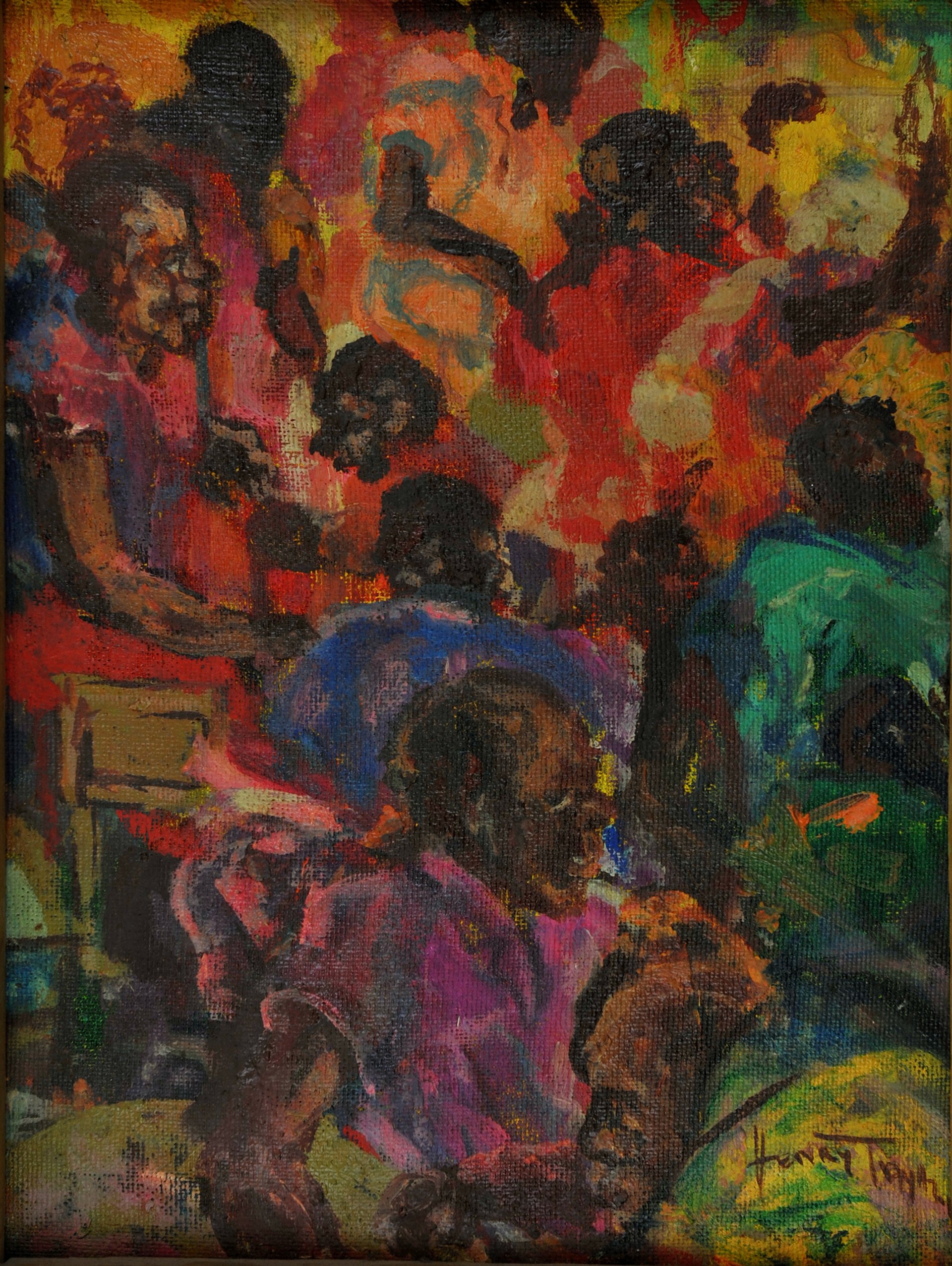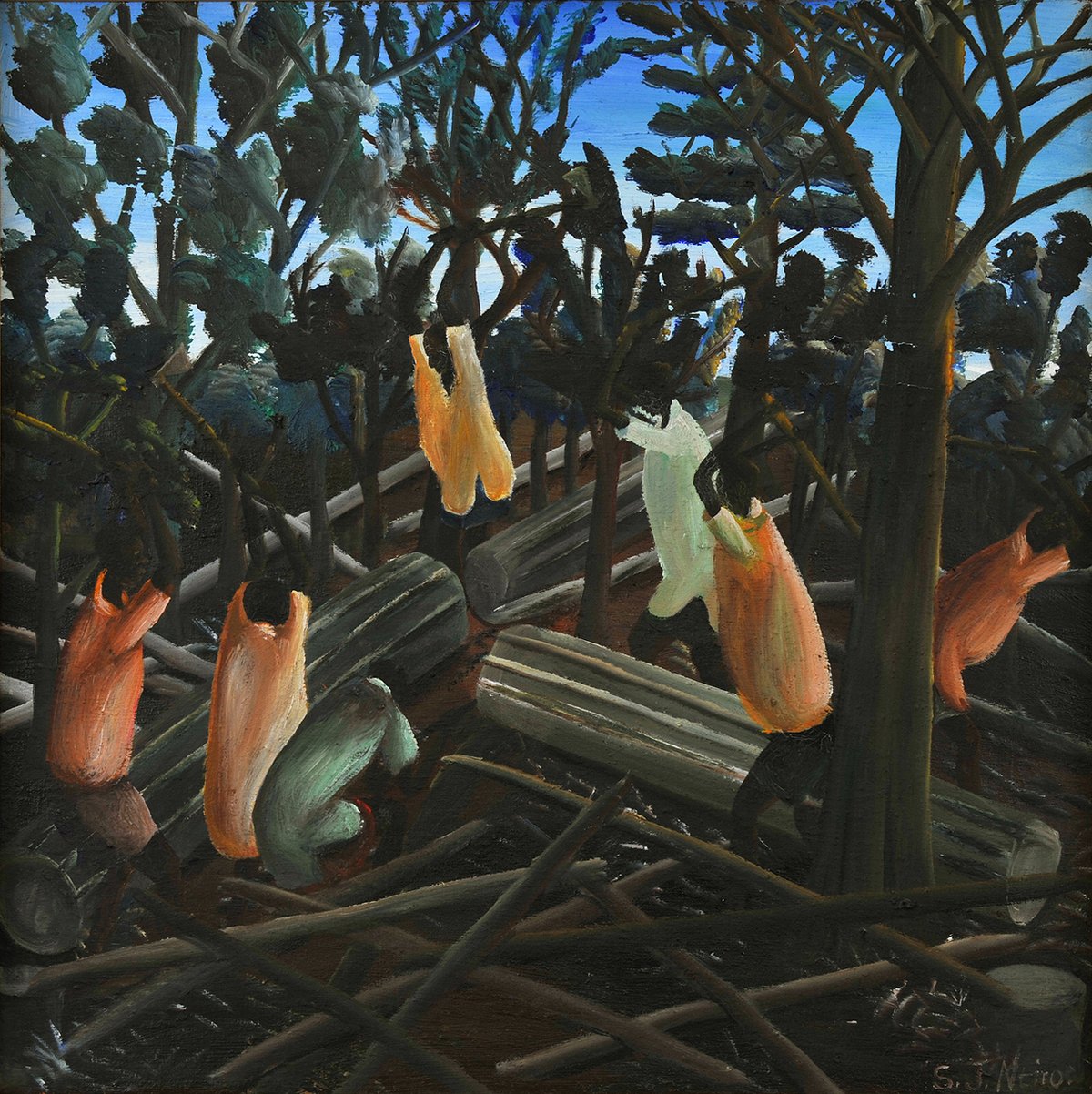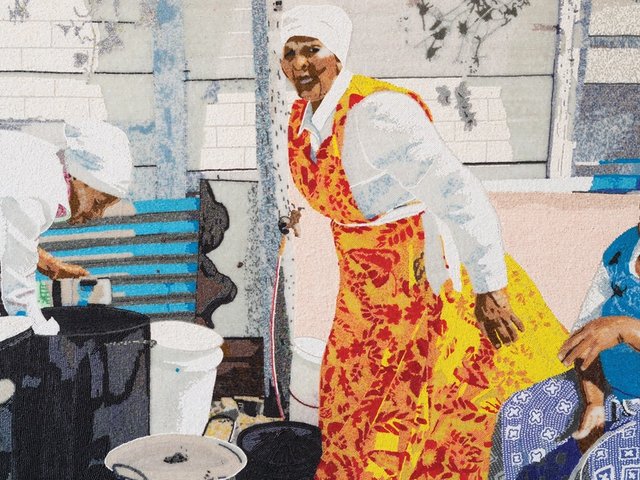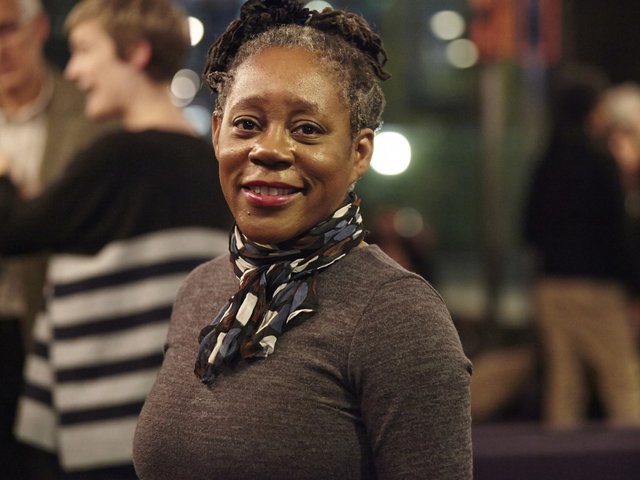Works from a collection held in a remote corner of western Scotland have been reattributed to some of Africa's most notable Modernist painters.
Researchers from the University of St Andrews have concluded that ten misidentified works from the council-owned Argyll Collection are by well-known 20th-century eastern and southern African artists such as South Africa's Lucky Sibya, and Henry Tayali, Zambia's most famous painter.
The discovery was made by Kate Cowcher, a lecturer of art history at the University of St Andrews who, during research for a lecture, noticed that a painting she recognised as by Tanzanian artist Sam Joseph Ntiro was curiously held in a collection in rural Scotland.
After enquiring with a local council, Cowcher learned that many of the collection's works were being stored in a high school in Lochgilphead. Though the majority of the 173 works, amassed in the 1960s and 1970s, are by Scottish artists, it also contains a group of 12 paintings, drawings and prints from Africa. They were acquired by the author Naomi Mitchison, who, in collaboration with the Argyll County Council, set up the Argyll Collection to provide children in rural Scotland with access to art.

Henry Tayali's Untitled (1971) Courtesy of the Argyll Collection and University of St Andrews
Mitchison's extensive travels across East Africa during the period of independence allowed her to visit several of the region's leading art schools and galleries where she discovered a burgeoning art scene. Because Mitchison's budget was small—she paid no more than £100 for each work (around £2,000 today)—in many cases she bought works by undergraduate students, some of whom would later become prominent artists.
"She collected Modernist African art at a time when it wasn't seen as exciting. Most people on their travels to the region brought back traditional textiles and artefacts, not art," Cowcher says. Today, artists in the collection are internationally recognised as pre-eminent in their field: works by Ntiro, who also served as Tanzania's cultural commissioner, are held in the collection of New York's Museum of Modern Art.
Since the 1980s, the once touring Argyll Collection has fallen into disuse and the identities of many of the African artists were also lost to history, as in many instances their signatures had been mistranscribed.
Cowcher, alongside her assistants Elikem Logan and Meredith Loper, were able to piece together evidence using Mitchison's archived personal letters as well as insurance claims—many of which stated the artists' names in full. They also also consulted specialists from London's School of Oriental and African Studies (SOAS) and the Makerere University in Kampala, Uganda, where several of the artists in question studied. In several instances, researchers were able to actually contact the artists, like the Ugandan printmaker Catherine Nankya Katonoko Gombe, or their descendants, such as Henry Tayali's son Rhodrick.
"Discoveries of African Modern works of this nature are rare anywhere, but especially in somewhere like Scotland," says Giles Peppiatt, Bonham's African art specialist. Peppiatt points out that because the African Modern market is relatively nascent and comparatively unlucrative, the likelihood of these works being forged is very low.
The ten works (plus two others that are still being identified) are now due to go on show at the community art centre Dunoon Burgh Hall from 21 May in an exhibition titled Dar to Dunoon: Modern African Art from the Argyll Collection (until 13 June).
"There is going to be a balancing act with this exhibition," Cowcher says. "There will be mention of the post-colonial context and the dynamics of Western collecting in the region. But equally what I want viewers to take away is the sense of energy and excitement that existed around African independence, as well as the wide ranging Modernist art practice that developed there."




